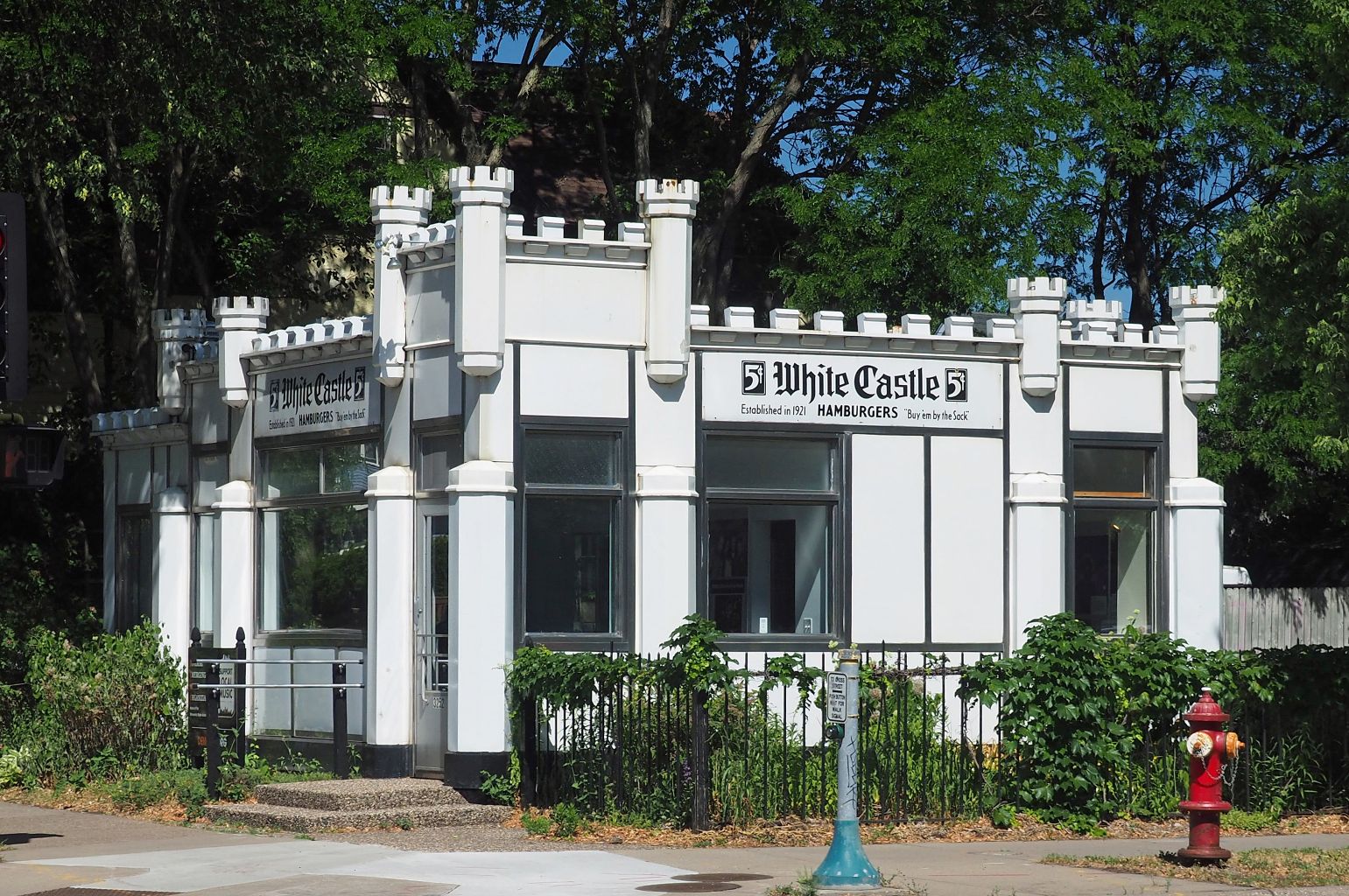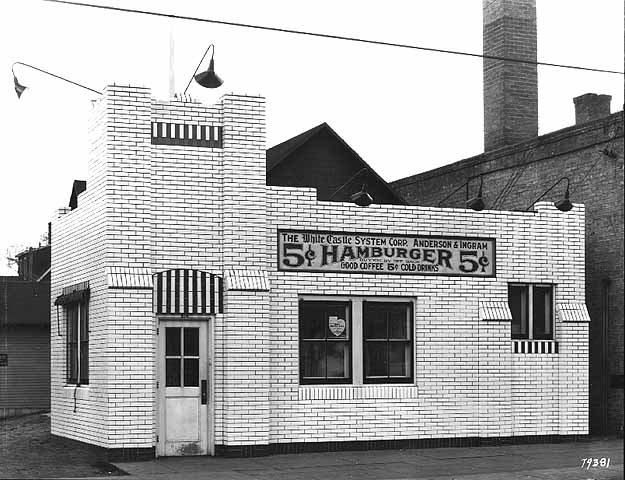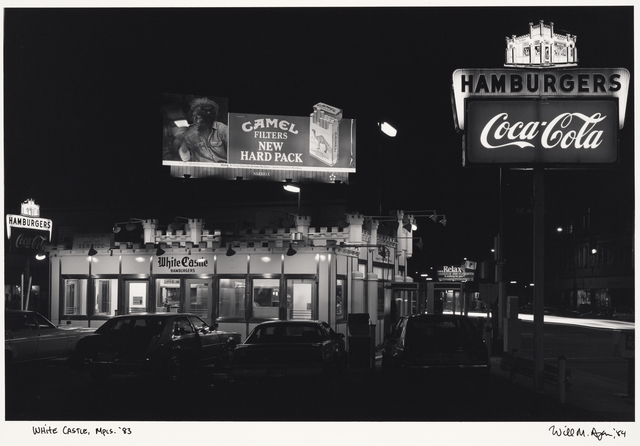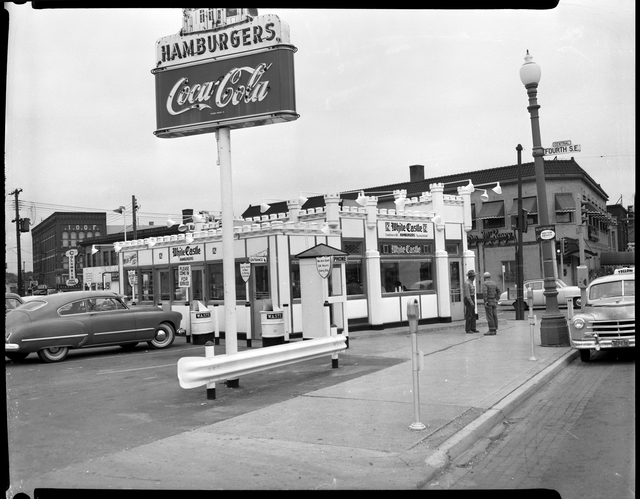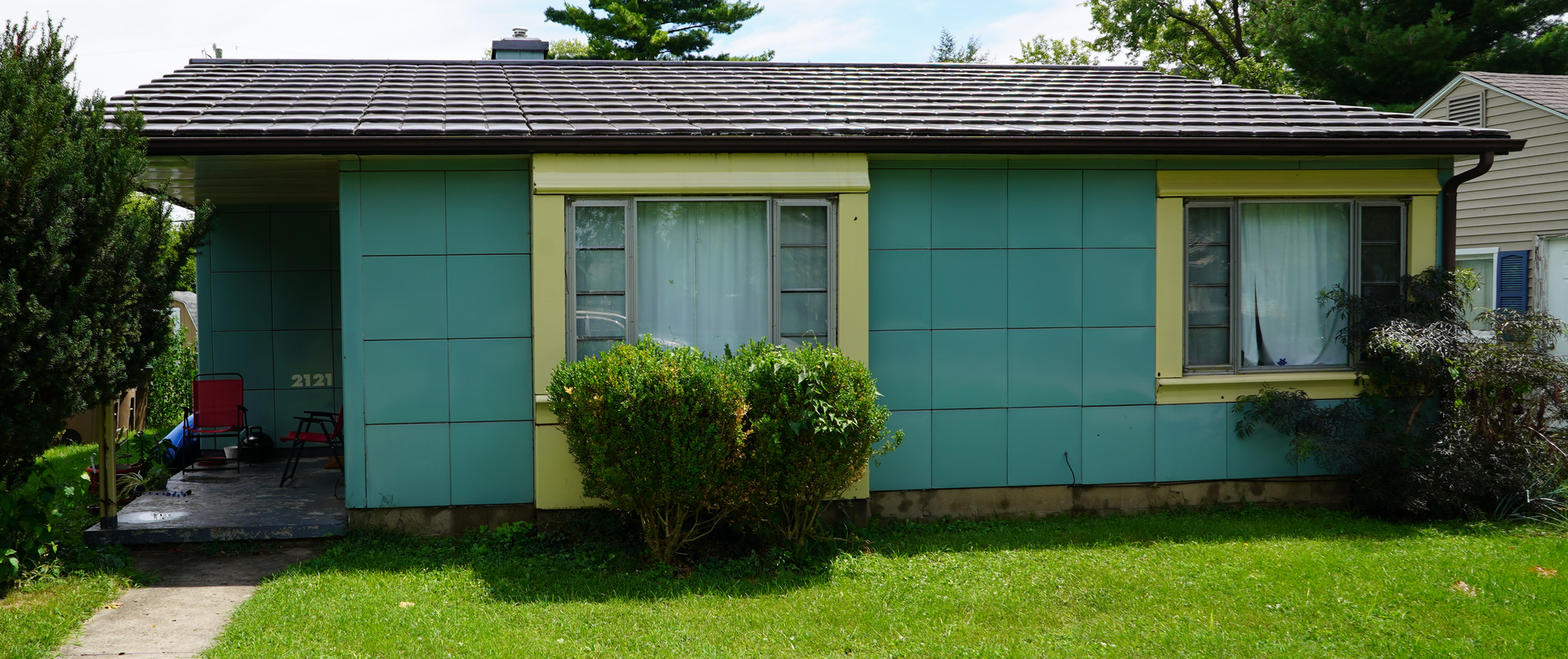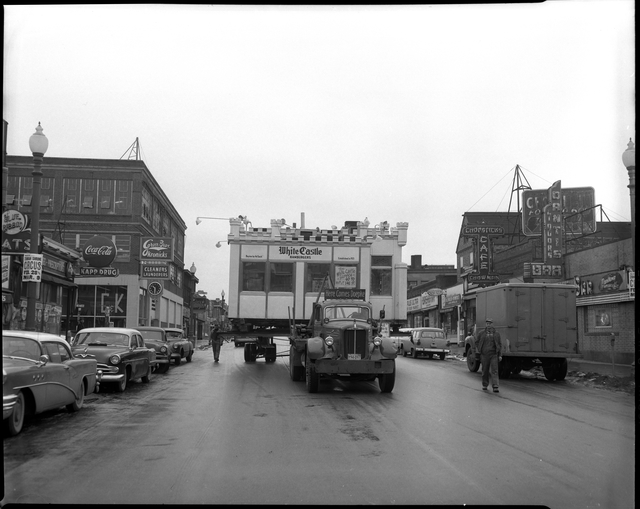October Friday History: White Castle
White Castle Building No. 8 is a landmark in the history of commercial architecture. It also marks a crucial turning-point in the history of Kraus-Anderson, the company that originally assembled the iconic hamburger stand. The picture above was taken as part of this humble structure’s 1986 registry into the National Register of Historic Places. The image below shows its current (Fall of 2025) use as a vintage store.
The porcelain steel structure now seen on Lyndale Avenue and 33nd Street is not the original building, nor is it anywhere near its original location. White Castle No. 8 was originally built in 1927, of brick, at 626 Washington Ave SE, placed strategically in the heart of the University of Minnesota’s campus to feed hungry college students.
The First Fast-Food Chain
In the early 1920s, when Walter Anderson and business partner Billy Engram decided to improve upon and reproduce Anderson’s hamburger stand, there was no template for them to follow. If we consider fast food to be a chain of restaurants, mass-producing standardized meals, then White Castle would have to be considered fast food’s earliest practitioner.
White Castle founded its restaurant chain on two principles: cleanliness and standardization. Building No. 8 is the architectural embodiment of these two principles. The interior of the first White Castles were furnished with pristine white enamel to combat the ick factor that was, at that time, anticipated from American consumers of ground beef patties.
Porcelain Steel Buildings
The 1937 structure that Kraus-Anderson assembled applied the pristine enamel to the entire structure and upped the level of standardization: In the 1930s White Castle formed a subsidiary called the Porcelain Steel Building Company and began prefabricating their restaurants out of enameled steel. This was a pioneering innovation that inspired subsequent examples. Several Lustron homes, for example, can be seen today in the Twin Cities, mostly in South Minneapolis. These were prefabricated in giant Ohio factory to combat the acute building shortage that followed WWII.
Aside from a clean and standard appearance, a porcelain steel building offered mobility: The White Castle system would rise above real estate concerns if their restaurants could simply be picked up and moved to a friendlier lot.
Lloyd Engelsma
The 1930s were lean years for the construction industry, and previous to the White Castle building, Kraus-Anderson was mostly focused on gas stations. Like a gas station, a fast-food restaurant is a deceptively simple thing: A small building that sits at the tip of a vast pyramid.
In 1937, the year after White Castle No. 8 was assembled, Lloyd Engelsma, the man who assembled it, would take ownership of Kraus-Anderson. Kraus-Anderson’s total sales that year were about $15,000, but these small buildings were establishing big relationships. Though Lloyd saw promise in the construction company that he purchased for $10,000 on contract for deed, he probably, back in the 30s, could not have imagined KA’s current sales volume. He would be surprised indeed to find that the 800 square-foot prefabricated restaurant that he built in 1936 would eventually be included in the National Register of Historic Places. I will give the register’s statement of significance the last word:
“The White Castle Building #8 represents an era and a national phenomenon. Fast Food is an invention of American culture, and the White Castle corporation holds primary responsibility for the invention of the industry. The White Castle building #8 is architecturally significant because is it one of the few remaining early examples of what is now an American institution, the fast-food hamburger stand. Moreover, the White Castle building represented the first successful use of porcelain enamel over steel as an architectural material.”
CATEGORY: Awards
